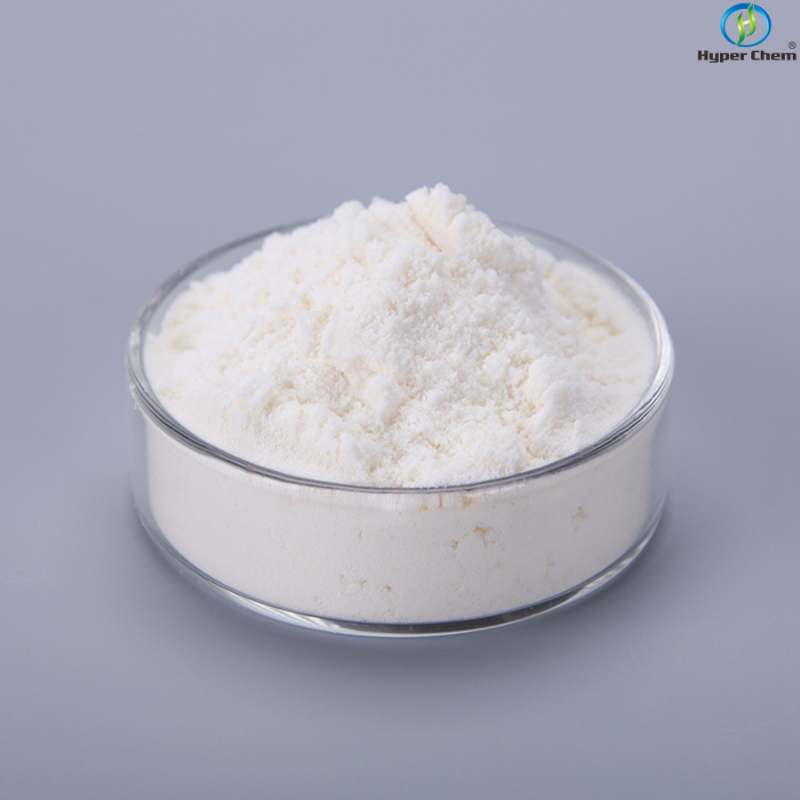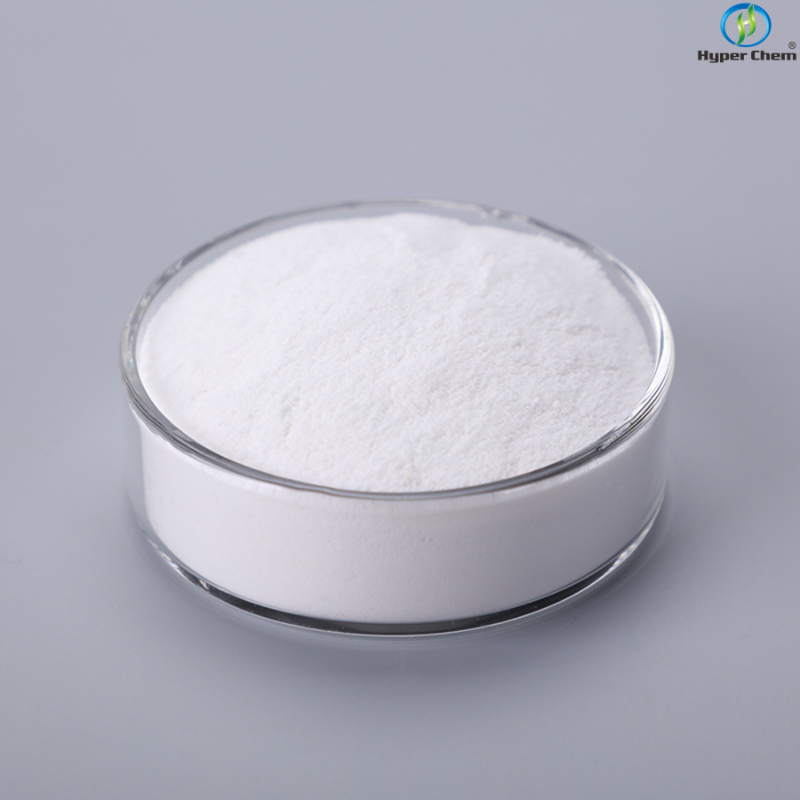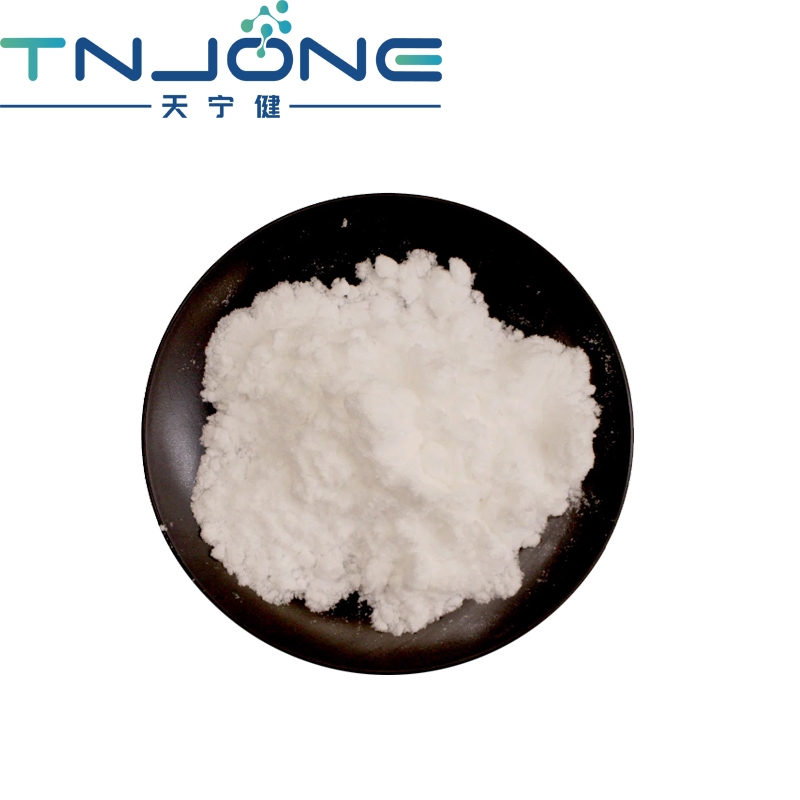-
Categories
-
Pharmaceutical Intermediates
-
Active Pharmaceutical Ingredients
-
Food Additives
- Industrial Coatings
- Agrochemicals
- Dyes and Pigments
- Surfactant
- Flavors and Fragrances
- Chemical Reagents
- Catalyst and Auxiliary
- Natural Products
- Inorganic Chemistry
-
Organic Chemistry
-
Biochemical Engineering
- Analytical Chemistry
-
Cosmetic Ingredient
- Water Treatment Chemical
-
Pharmaceutical Intermediates
Promotion
ECHEMI Mall
Wholesale
Weekly Price
Exhibition
News
-
Trade Service
The prognosis for patients with newly diagnosed multiple myeloma (NDMM) has improved with continued research into therapeutic drugs and treatment options
.
How to quickly and effectively evaluate the efficacy of new therapies is a challenge that must be faced in clinical practice
.
For traditional treatment endpoints, such as progression-free survival (PFS) and overall survival (OS), clinical studies take a long time to read results, hindering the application of new therapies to clinical practice
.
Therefore, a faster and more convenient new assessment method is needed in clinical practice
.
The minimal residual disease (MRD) test is a sensitive test that reflects the remission status of tumor cells in the bone marrow, and MRD status has gradually become the primary endpoint of many studies
.
In addition, daratumumab, a CD38-targeting monoclonal antibody, has a mechanism of action that directly targets tumors and immune regulation, and has been approved for multi-line treatment of multiple myeloma
.
Two phase III studies (MAIA and ALCYONE) evaluated the efficacy of daratumumab-based regimens in patients with NDMM who were not candidates for hematopoietic stem cell transplantation and showed that daratumumab-based regimens compared with conventional regimens Monoclonal antibody therapy allows NDMM patients to achieve higher MRD-negative rates and longer PFS
.
Jesus San-Miguel et al.
analyzed the correlation between persistent MRD negativity and PFS based on research data from MAIA and ALCYONE, and evaluated for the first time the value of persistent MRD negativity for 6 months or 12 months on the prognosis of NDMM patients who were not suitable for hematopoietic stem cell transplantation.
.
>>>Research Methods The data for this study were derived from the published Phase III results of MAIA (#NCT02252172) and ALCYONE (#NCT02195479)
.
All patients were NDMM patients who were ≥65 years old or had comorbidities and were unable to undergo high-dose chemotherapy and hematopoietic stem cell transplantation
.
In each study, patients were staged according to the International Staging System (ISS)
.
The MAIA study evaluated patients with daratumumab + lenalidomide + dexamethasone (D-Rd) or lenalidomide + dexamethasone (Rd)
.
In a 28-day cycle, all patients received lenalidomide 25 mg orally (days 1-21) and dexamethasone 40 mg (weekly)
.
Patients in the D-Rd arm received daratumumab 16 mg/kg (weekly for cycles 1 and 2, every 2 weeks for weeks 3 to 6, and every 4 weeks thereafter) until disease Progress or severe toxicity
.
The ALCYONE study evaluated the efficacy of daratumumab + bortezomib + melphalan + prednisone (D-VMP) or bortezomib + melphalan + prednisone (VMP)
.
All patients received at least 1 cycle (42-day cycle) of bortezomib 1.
3 mg/m2 subcutaneously twice a week (weeks 1, 2, 4 and 5 of the first cycle) ), then once a week thereafter (weeks 1, 2, 4, and 5 of cycles 2 to 9), melphalan 9 mg/m2 and prednisone 60 mg/m2 orally (1st to day 4)
.
In the D-VMP group, patients received daratumumab 16 mg/kg intravenously (weekly for the first cycle, every 3 weeks for cycles 2 to 9, and every 4 weeks thereafter), until disease progression or severe toxicity
.
The primary endpoint of both studies was PFS
.
All patients who achieved complete remission (CR) were tested for MRD
.
Additional MRD testing was performed at 12, 18, 24, and 30 months after the first dose, all of which were bone marrow aspirate and next-generation sequencing by clonoSEQ assay
.
The MRD-negative rate was defined as the proportion of patients who achieved CR and were MRD-negative
.
Patients were defined as MRD-positive if they did not meet the MRD-negative criteria (10-5), had inconclusive or missing test results, or did not achieve a CR or better response
.
For intent-to-treat (ITT) patients, the study assessed the number of patients who were MRD-negative for ≥6 months and ≥12 months, respectively
.
>>>Results The MAIA study included 737 patients (368 in the D-Rd group and 369 in the Rd group) with a median follow-up time of 36.
4 months (range 0-49.
9 months)
.
The ALCYONE study included 706 patients (350 in the D-VMP group and 356 in the VMP group) with a median follow-up of 40.
1 months (range 0-52.
1 months)
.
Most patients met the criteria for MRD testing (MAIA 93.
1%, ALCYONE 91.
9%), and a small number of patients did not have MRD testing (D-Rd 1.
6% [3/182], Rd 5.
0% [5/100]; D -VMP 4.
4% [7/160], VMP 7.
8% [7/90])
.
The results of both studies of MRD negativity and persistence rates showed that in ITT patients, daratumumab-containing regimens improved the MRD negativity rate in NDMM patients (D-Rd 28.
8% vs Rd 9.
2%, p< 0.
0001; D-VMP 58.
8% vs VMP 27.
8%, p < 0.
0001), and a higher rate of MRD at 10-6 (D-Rd 9.
2% vs Rd 3.
3%, p=0.
0007; D-VMP 9.
1% vs VMP 0.
8 %, p < 0.
0001)
.
Analysis of MRD-negative persistence rates (≥6 months and ≥12 months) in MRD-negative patients in both studies found that use of daratumumab was associated with higher rates of MRD negativity in both ITT patients.
Persistence rate related (Table 1)
.
Table 1.
Association of PFS with MRD-negative In MAIA and ALCYONE studies, MRD-negative patients had longer PFS compared with MRD-positive patients (MAIA: HR 0.
15 [95% CI, 0.
09-0.
26], P<0.
0001; ALCYONE: HR 0.
21 [95% CI, 0.
15-0.
30], P<0.
0001, Figures 1, 2)
.
Figures 1 and 2 In both studies, use of daratumumab was associated with longer median TTSAT (time to subsequent anticancer therapy) in MRD-positive patients
.
Among MRD-negative patients, the ALCYONE VMP group achieved a median TTSAT of 44.
4 months, and the rest did not
.
(Table 2) Table 2 Among the patients who achieved MRD negativity before achieving subsequent therapy, whether receiving daratumumab-based regimens or conventional therapy regimens, patients who achieved MRD negativity on PFS2 (after achieving MRD negativity) There were no differences in time to first disease progression or death) or mortality risk regimen (Table 3), and there were fewer adverse events
.
Among patients who remained MRD-positive before reaching subsequent therapy, there was no significant difference in PFS2 between D-Rd and Rd patients, but D-VMP patients had longer PFS2 than VMP patients (HR 0.
64 [95% CI 0.
49-0.
83], P=0.
0008)
.
Overall, compared with patients who did not achieve persistent MRD negativity, persistent MRD-negative patients had the highest predicted TTSAT rate of 36 months, and MRD-positive patients had the lowest median TTSAT
.
(Table 2) Table 3 Combined analysis of PFS and MRD-negative In the combined analysis of the MAIA and ALCYONE studies, MRD-negative (n=259) patients had improved PFS compared with MRD-positive (n=1184) patients (HR 0.
19 [ 95%CI 0.
14-0.
26], P<0.
0001, Figure 3A)
.
This trend was maintained regardless of treatment regimen (Fig.
3B)
.
Among MRD-negative patients, patients using the daratumumab-containing regimen achieved longer PFS compared with usual care (HR 0.
51 [95% CI 0.
28-0.
92], P<0.
0253, Figure 3B)
.
Figure 3 >>> Study Conclusions This study is the first to assess the prognostic value of persistent MRD negativity for ≥6 months or ≥12 months in NDMM, and these data provide data support for persistent MRD negativity as a tool for predicting prognosis in NDMM, and also for MRD Negative duration can help with the significance of clinical treatment
.
Reference: Jesus San-Miguel, Hervé Avet-Loiseau, Bruno Paiva, et al.
Sustained minimal residual disease negativity in newly diagnosed multiple myeloma and the impact of daratumumab in MAIA and ALCYONE.
Blood 2022; 139 (4): 492–501 .
doi: https://doi.
org/10.
1182/blood.
2020010439.
Click "Read the original text", we will make progress together
.
How to quickly and effectively evaluate the efficacy of new therapies is a challenge that must be faced in clinical practice
.
For traditional treatment endpoints, such as progression-free survival (PFS) and overall survival (OS), clinical studies take a long time to read results, hindering the application of new therapies to clinical practice
.
Therefore, a faster and more convenient new assessment method is needed in clinical practice
.
The minimal residual disease (MRD) test is a sensitive test that reflects the remission status of tumor cells in the bone marrow, and MRD status has gradually become the primary endpoint of many studies
.
In addition, daratumumab, a CD38-targeting monoclonal antibody, has a mechanism of action that directly targets tumors and immune regulation, and has been approved for multi-line treatment of multiple myeloma
.
Two phase III studies (MAIA and ALCYONE) evaluated the efficacy of daratumumab-based regimens in patients with NDMM who were not candidates for hematopoietic stem cell transplantation and showed that daratumumab-based regimens compared with conventional regimens Monoclonal antibody therapy allows NDMM patients to achieve higher MRD-negative rates and longer PFS
.
Jesus San-Miguel et al.
analyzed the correlation between persistent MRD negativity and PFS based on research data from MAIA and ALCYONE, and evaluated for the first time the value of persistent MRD negativity for 6 months or 12 months on the prognosis of NDMM patients who were not suitable for hematopoietic stem cell transplantation.
.
>>>Research Methods The data for this study were derived from the published Phase III results of MAIA (#NCT02252172) and ALCYONE (#NCT02195479)
.
All patients were NDMM patients who were ≥65 years old or had comorbidities and were unable to undergo high-dose chemotherapy and hematopoietic stem cell transplantation
.
In each study, patients were staged according to the International Staging System (ISS)
.
The MAIA study evaluated patients with daratumumab + lenalidomide + dexamethasone (D-Rd) or lenalidomide + dexamethasone (Rd)
.
In a 28-day cycle, all patients received lenalidomide 25 mg orally (days 1-21) and dexamethasone 40 mg (weekly)
.
Patients in the D-Rd arm received daratumumab 16 mg/kg (weekly for cycles 1 and 2, every 2 weeks for weeks 3 to 6, and every 4 weeks thereafter) until disease Progress or severe toxicity
.
The ALCYONE study evaluated the efficacy of daratumumab + bortezomib + melphalan + prednisone (D-VMP) or bortezomib + melphalan + prednisone (VMP)
.
All patients received at least 1 cycle (42-day cycle) of bortezomib 1.
3 mg/m2 subcutaneously twice a week (weeks 1, 2, 4 and 5 of the first cycle) ), then once a week thereafter (weeks 1, 2, 4, and 5 of cycles 2 to 9), melphalan 9 mg/m2 and prednisone 60 mg/m2 orally (1st to day 4)
.
In the D-VMP group, patients received daratumumab 16 mg/kg intravenously (weekly for the first cycle, every 3 weeks for cycles 2 to 9, and every 4 weeks thereafter), until disease progression or severe toxicity
.
The primary endpoint of both studies was PFS
.
All patients who achieved complete remission (CR) were tested for MRD
.
Additional MRD testing was performed at 12, 18, 24, and 30 months after the first dose, all of which were bone marrow aspirate and next-generation sequencing by clonoSEQ assay
.
The MRD-negative rate was defined as the proportion of patients who achieved CR and were MRD-negative
.
Patients were defined as MRD-positive if they did not meet the MRD-negative criteria (10-5), had inconclusive or missing test results, or did not achieve a CR or better response
.
For intent-to-treat (ITT) patients, the study assessed the number of patients who were MRD-negative for ≥6 months and ≥12 months, respectively
.
>>>Results The MAIA study included 737 patients (368 in the D-Rd group and 369 in the Rd group) with a median follow-up time of 36.
4 months (range 0-49.
9 months)
.
The ALCYONE study included 706 patients (350 in the D-VMP group and 356 in the VMP group) with a median follow-up of 40.
1 months (range 0-52.
1 months)
.
Most patients met the criteria for MRD testing (MAIA 93.
1%, ALCYONE 91.
9%), and a small number of patients did not have MRD testing (D-Rd 1.
6% [3/182], Rd 5.
0% [5/100]; D -VMP 4.
4% [7/160], VMP 7.
8% [7/90])
.
The results of both studies of MRD negativity and persistence rates showed that in ITT patients, daratumumab-containing regimens improved the MRD negativity rate in NDMM patients (D-Rd 28.
8% vs Rd 9.
2%, p< 0.
0001; D-VMP 58.
8% vs VMP 27.
8%, p < 0.
0001), and a higher rate of MRD at 10-6 (D-Rd 9.
2% vs Rd 3.
3%, p=0.
0007; D-VMP 9.
1% vs VMP 0.
8 %, p < 0.
0001)
.
Analysis of MRD-negative persistence rates (≥6 months and ≥12 months) in MRD-negative patients in both studies found that use of daratumumab was associated with higher rates of MRD negativity in both ITT patients.
Persistence rate related (Table 1)
.
Table 1.
Association of PFS with MRD-negative In MAIA and ALCYONE studies, MRD-negative patients had longer PFS compared with MRD-positive patients (MAIA: HR 0.
15 [95% CI, 0.
09-0.
26], P<0.
0001; ALCYONE: HR 0.
21 [95% CI, 0.
15-0.
30], P<0.
0001, Figures 1, 2)
.
Figures 1 and 2 In both studies, use of daratumumab was associated with longer median TTSAT (time to subsequent anticancer therapy) in MRD-positive patients
.
Among MRD-negative patients, the ALCYONE VMP group achieved a median TTSAT of 44.
4 months, and the rest did not
.
(Table 2) Table 2 Among the patients who achieved MRD negativity before achieving subsequent therapy, whether receiving daratumumab-based regimens or conventional therapy regimens, patients who achieved MRD negativity on PFS2 (after achieving MRD negativity) There were no differences in time to first disease progression or death) or mortality risk regimen (Table 3), and there were fewer adverse events
.
Among patients who remained MRD-positive before reaching subsequent therapy, there was no significant difference in PFS2 between D-Rd and Rd patients, but D-VMP patients had longer PFS2 than VMP patients (HR 0.
64 [95% CI 0.
49-0.
83], P=0.
0008)
.
Overall, compared with patients who did not achieve persistent MRD negativity, persistent MRD-negative patients had the highest predicted TTSAT rate of 36 months, and MRD-positive patients had the lowest median TTSAT
.
(Table 2) Table 3 Combined analysis of PFS and MRD-negative In the combined analysis of the MAIA and ALCYONE studies, MRD-negative (n=259) patients had improved PFS compared with MRD-positive (n=1184) patients (HR 0.
19 [ 95%CI 0.
14-0.
26], P<0.
0001, Figure 3A)
.
This trend was maintained regardless of treatment regimen (Fig.
3B)
.
Among MRD-negative patients, patients using the daratumumab-containing regimen achieved longer PFS compared with usual care (HR 0.
51 [95% CI 0.
28-0.
92], P<0.
0253, Figure 3B)
.
Figure 3 >>> Study Conclusions This study is the first to assess the prognostic value of persistent MRD negativity for ≥6 months or ≥12 months in NDMM, and these data provide data support for persistent MRD negativity as a tool for predicting prognosis in NDMM, and also for MRD Negative duration can help with the significance of clinical treatment
.
Reference: Jesus San-Miguel, Hervé Avet-Loiseau, Bruno Paiva, et al.
Sustained minimal residual disease negativity in newly diagnosed multiple myeloma and the impact of daratumumab in MAIA and ALCYONE.
Blood 2022; 139 (4): 492–501 .
doi: https://doi.
org/10.
1182/blood.
2020010439.
Click "Read the original text", we will make progress together







